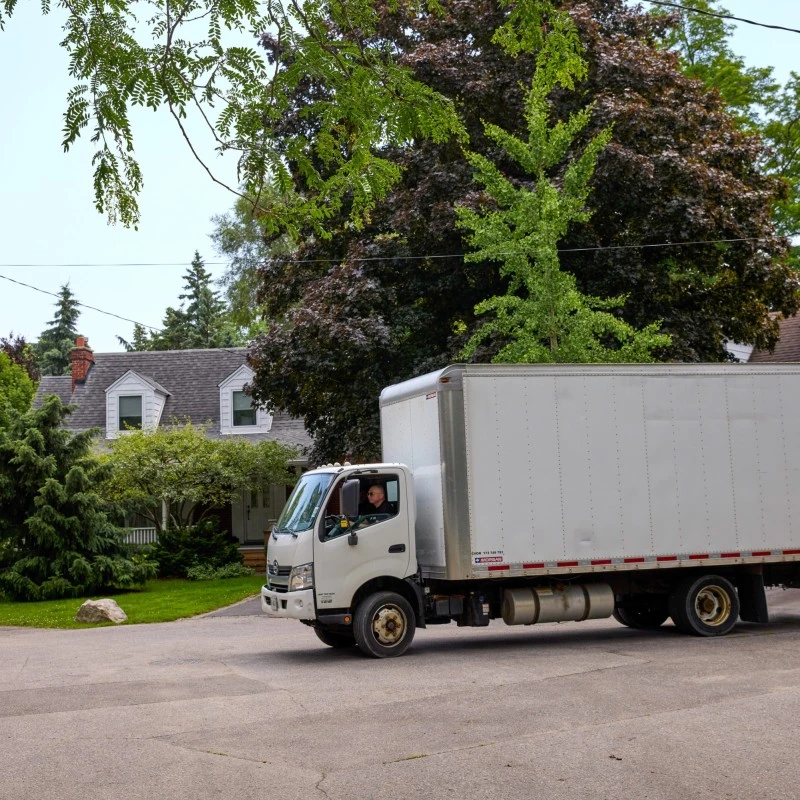Canada Through the Lens: A Photographer's Guide to Capturing the Landscape


Photographers are drawn to Canada from all over the world to capture the beauty of the country's vast, neverending landscapes.
From the sweeping prairie sunsets to the snow-capped peaks of the Rocky Mountains, the choices of locations for world-class photography are numerous.
This article covers tips and prime location suggestions for photographers wanting to explore Canada, with camera in hand.
Before you begin your photography adventure
Embarking on a photography trip is exciting, and you might be asking yourself, where to begin?
Experienced photographers know that a huge part of the trip involves proper planning. Researching Canada in preparation for travel is important - the country's weather and seasons are extreme at times, and vary by region. The weather patterns and angle of the sun can change the landscape and lighting drastically.
There are plenty of photography guides, travel blogs and social media groups and pages that are full of ideas and tips for photographing Canada’s landscapes. Tourism websites will help with directions and access. It’s good to stay flexible while planning as the weather can often be unpredictable.
Depending on the season, specific regions offer exceptional natural occurrences to photograph. For example:
-
Ontario in October is famous for its red, orange and yellow foliage in the fall, thanks to all of the maple trees changing colours as the temperature gradually drops.
-
The Rocky Mountains reach maximum beauty in the winter, with their epic snowy white peaks contrasting with dark rocky crevices, and gorgeous frozen lakes all around.
-
Spring in British Columbia is a haven for wildflowers and lush greenery, with the most flowers appearing in May.
-
Summer in the Prairie region is the perfect time for huge skies with unforgettable sunsets full of colours.
Canada is vast, and each geographical region feels completely different from the next. The following sections describe various areas in greater detail in relation to photography.
Rugged coastal highlights of Maritime Canada

-
Peggy’s Cove, N.S. - The combination of an iconic lighthouse, granite rock formations and epic sunsets is ideal for landscape photography and represents quintessential maritime beauty.
-
Cape Breton Highlands, N.S. - An area known for ocean views and dramatic cliffs, Cape Breton is at peak beauty in the fall when the foliage is changing colours and mists start to cover the seaside.
-
Gros Morne National Park, NL - This park features fjords, towering cliffs, and untouched forests.
-
Iceberg Alley, NL - VIsit here to see floating icebergs, a unique, surreal element of Canadian landscape
-
Prince Edward Island’s red sand beaches and pastoral landscapes - The red sand beaches of PEI contrasts with its rolling green fields to create a visual delight that can be perfectly captured with the camera.
Suggestions for Maritime Photography
The golden hours (sunrise and sunset) are ideal for photographing coastlines, as the light is softer and the shadows are more contrasting. Use a wide-angle lens to capture the expansive scenery of the Maritime seaside and landscapes.
To balance sea and land compositions, remember the rule of thirds: place the horizon line either one-third from the top or bottom of the frame. Incorporate foreground elements like rocks or tide pools to add depth and interest. Experiment with different angles and perspectives to highlight the texture and contrast between the land and sea.
Photographing fall colours of Ontario, Niagara Falls and historic Quebec

-
Algonquin Provincial Park, ON - This park provides a perfect mix of lakes, forests and diverse wildlife combined with the mindblowing colours of the changing foliage in the fall.
-
Niagara Falls, ON - These powerful forces behind Niagara Falls are combined with beautiful lighting to create a contrast of misty rainbows and thundering cascades year-round.
-
Mont Tremblant, QC - This beautiful village with a mountain backdrop represents the quintessential beauty of Quebec, especially in the fall with the fiery colours of the changing foliage.
-
Gaspe Peninsula, QC - The Peninsula is a combo of rugged coastline, huge cliffs and atmospheric lighthouses, providing visual drama for photographers, especially during sunrises and sunsets.
Suggestions for architectural photography
To capture a combo of natural beauty with the stunning, historic architecture of Quebec, frame the architecture with surrounding natural elements like trees or water, and use natural light to highlight architectural details. Experiment with architectural angles and note how they contrast with the curved lines of the natural backdrop.
Taking photos of the Prairies

-
Riding Mountain National Park, MB - The versatility of this park includes forests, prairies and lakes. The addition of abundant wildlife makes it a photographer's dream.
-
Grasslands National Park, SK - Classic rolling plains, huge dramatic skies and unusual rock formations make Grasslands Park an ideal place to photograph untouched nature.
-
Qu’Appelle Valley, SK - Winding rivers moving through lush valleys create scenic views for photographers. The contrasting colours of the earth and flora, especially during the fall, attract photographers from all over.
-
The Hoodoos, AB - Perplexing, otherworldly rock formations are perfect for unique photography and create an eerie atmosphere especially at sunrise or sunset.
READ: Alberta Wildfires: What’s Going On?
Tips for photographing wide-open spaces
In the prairies, the views appear to go on forever. Emphasise the vastness of prairie views and huge skies by using a wide-angle lens. Position the horizon low in your frame to highlight the sky and dynamic cloud formations. Use some of the straight lines of the prairies, like roads or rows of crops, to guide the viewer's eye. Consider shooting during the golden hour to enhance the warm tones and long shadows, which can add depth and texture.
Capturing the monumental beauty of the Rockies

-
Banff National Park - The unmatched beauty of Banff is a photographer’s playground, complete with turquoise lakes (including Lake Louise and Moraine Lake), towering mountain peaks and iconic Canadian wildlife.
-
Jasper National Park - Jasper is a dreamscape for photographers, with rugged mountains, glaciers and the most clean and clear lakes imaginable. This National Park is the definition of “pristine”.
Tips for photography in the mountains
Aim to capture the Rockies during early morning or late afternoon for the best light and calm weather conditions. Patience is the ticket for viewing and photographing wildlife. Remember to keep your distance and use a telephoto lens to capture animals in their natural habitat without disturbing them.
READ: Ultimate Guide to Canadian Wildlife: Where to See Animals
Photography in British Columbia; from coastal temperate rainforests to vineyards in the desert

-
Pacific Rim National Park Reserve - Canada’s west coast is the epitome of wild, raw and rugged wilderness. The rainforests are so lush they almost seem tropical, and the white sandy beaches of Pacific Rim go on forever.
-
Okanagan Valley - The Valley’s endless rolling vineyards sit beautiful amongst sparkling lakes. Canada’s only desert is home to a blanket of white and silver buffalo sage that covers the entire region, and you can even spot cacti and rattlesnakes!
-
Great Bear Rainforest - This northern B.C. coastal region hosts one of the biggest temperate rainforests in the world, complete with monumental old-growth trees, plentiful wildlife and misty, moss-covered wilderness.
Tips for photography in British Columbia
When photographing temperate rainforests, use a polarising filter to reduce glare and enhance the lush greens of forest.
For wildlife, move slowly and be patient. Use a telephoto lens to maintain a respectful distance while getting detailed shots.
In untouched wilderness areas, focus on composition, incorporating elements like leading lines and natural frames. Always respect nature by following Leave No Trace principles to preserve these beautiful spaces for plants, wildlife, and future visitors.
Exploring photography in the wild Northern Territories

-
Kluane National Park, YT - Visit this park to photograph icefields, alpine terrain, wildlife and mountain peaks, including the highest mountain in Canada, Mount Logan.
-
Nahanni National Park, NWT - Nahanni features epic canyons, huge waterfalls and the beautiful South Nahanni River.
-
Great Slave Lake, NWT - Come here to witness and photograph vast waterscapes with unique ice formations in the winter.
-
Auyuittuq National Park, NU - This national park offers fjords, glaciers and mountain peaks, a complete representation of the Arctic.
-
Aurora Borealis - Also known as the Northern Lights, Aurora Borealis fills the night skies with bright, moving colours. The light show is unforgettable and inspires an ethereal feeling in its viewers.
-
Arctic WIldlife - Arctic wildlife, including polar bears, caribou, and Arctic foxes, live and roam all over the tundra.
Considerations for Arctic photography
VIsiting the Arctic is not for the faint of heart. Photographing in Arctic conditions requires preparation and resilience. Dress warmly, in layers. Protect your gear with weatherproof covers to withstand the cold.
For capturing the Aurora Borealis, use a tripod and set your camera to a high ISO with a wide aperture and long exposure to capture the bright colours and movement.
When navigating challenging terrains, ensure your safety by carrying essential gear like GPS, extra batteries (cold drains them quickly), and a sturdy tripod for stability on uneven surfaces. Safety first, always. Prioritise your personal safety and the protection of your equipment.
What do our customers say?



























